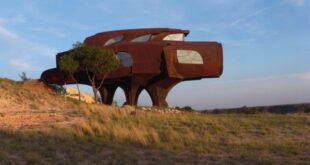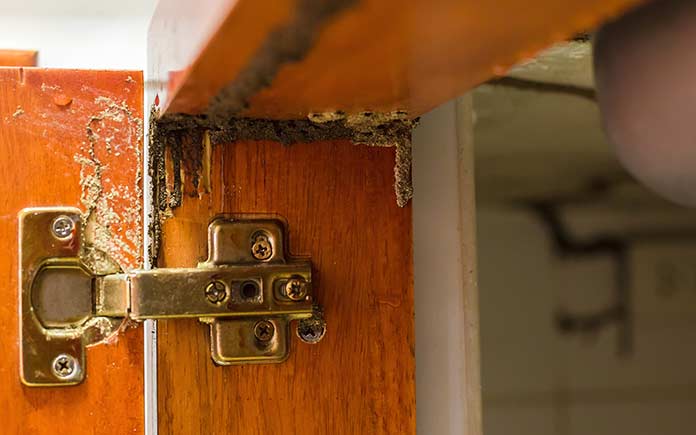
Knowing the signs of termites can help you spot an infestation and prevent catastrophic damage to your home.
Drywood termites and subterranean termites each leave distinct signs of their presence, and collectively, they annually cause over $ 5 billion in property damage.
If you don’t want your home to become a statistic, study up on these signs!
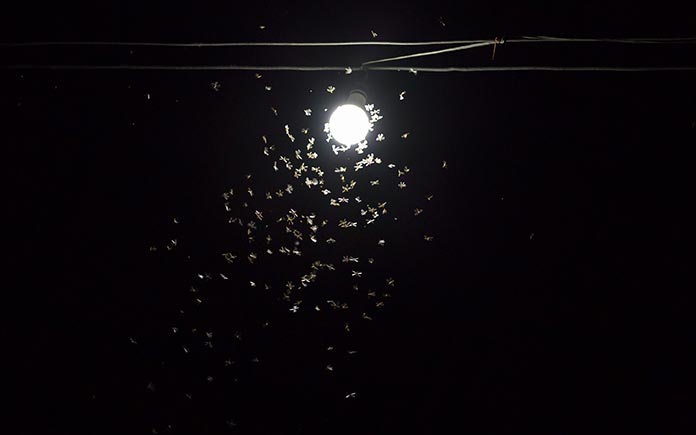
1. Swarms
Swarm termites, also known as flying termites, are clear signs of an infestation for drywood and subterranean termites.
Swarm termites are the reproductive males and females that leave the colony to find a new area to mate and establish a new colony. These termites typically leave the nest one or two times per year, and it’s usually during the spring or during the fall.
They are attracted to light and you may find them near light fixtures.
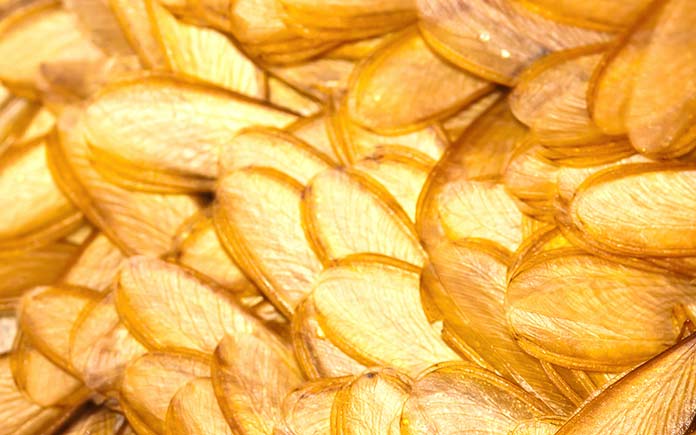
2. Discarded Wings
Discarded wings are evidence that swarm termites have selected a new place to colonize. Unfortunately for your home, first, they shed their wings as they no longer need to travel. Then, they shift their focus toward building the colony and mating.
Often located near entry points by doors, window ledges, vents or underneath the light from a lightbulb, piles of small wings are a telltale sign of termites.
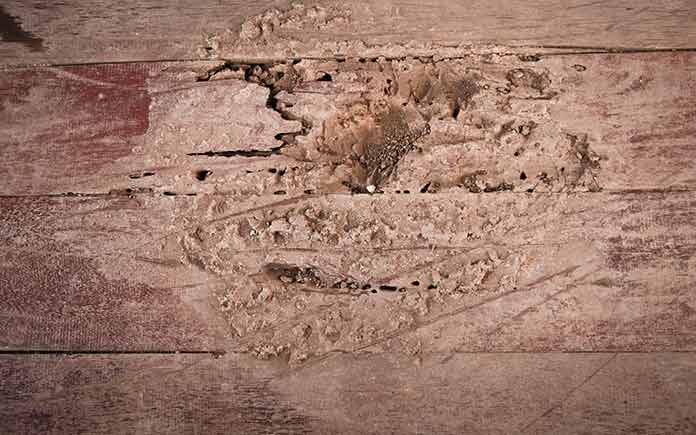
3. Headbanging
Drywood termites typically damage homes by creating sagging floors, walls and ceilings. They live deep within wooden structures and consume the framework of your house.
They make places they intrude appear to be water-damaged, and you’ll notice discolored or damp spots on the walls.
Sight isn’t the only way to spot termite damage — so is noise.
Headbanging, as the name suggests, is when termites bang their heads against wood or shake their bodies to signal danger to the colony to other termites.
The headbanging echoes as quiet clicking noises from the walls.
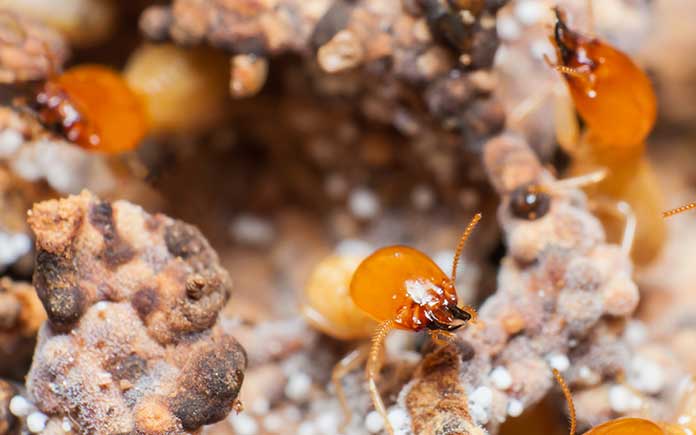
4. Frass
Frass, or termite droppings, is a clear sign of a termite infestation.
Drywood termites nest inside wood and, as they create tunnels, they also form holes to discard their droppings to keep the nest clean. Most frass are very small, no longer than one millimeter long.
These termite droppings look like pellets or wood shavings, similar to the appearance of sawdust.
You can find these pellets anywhere there is wood in the home.



